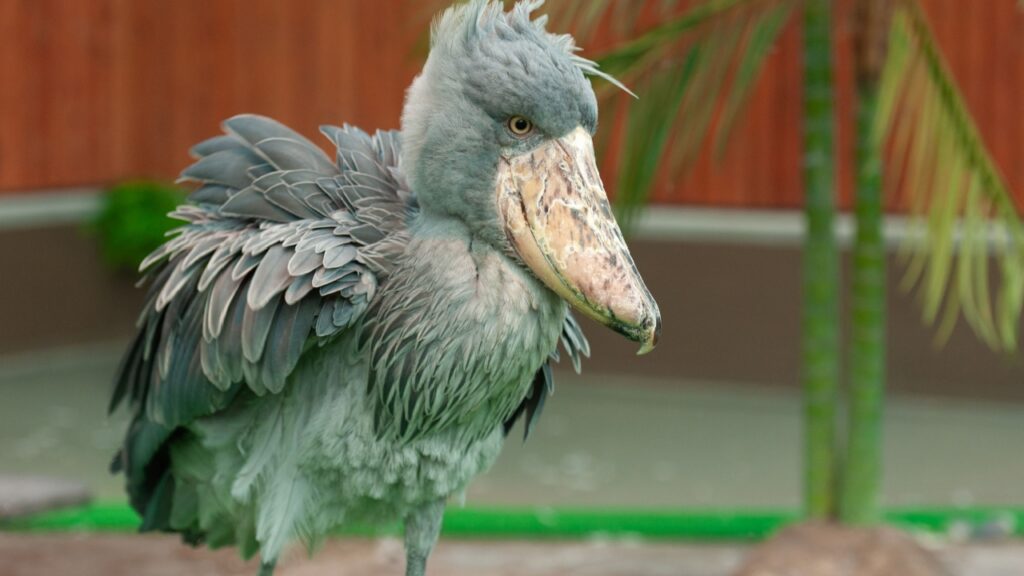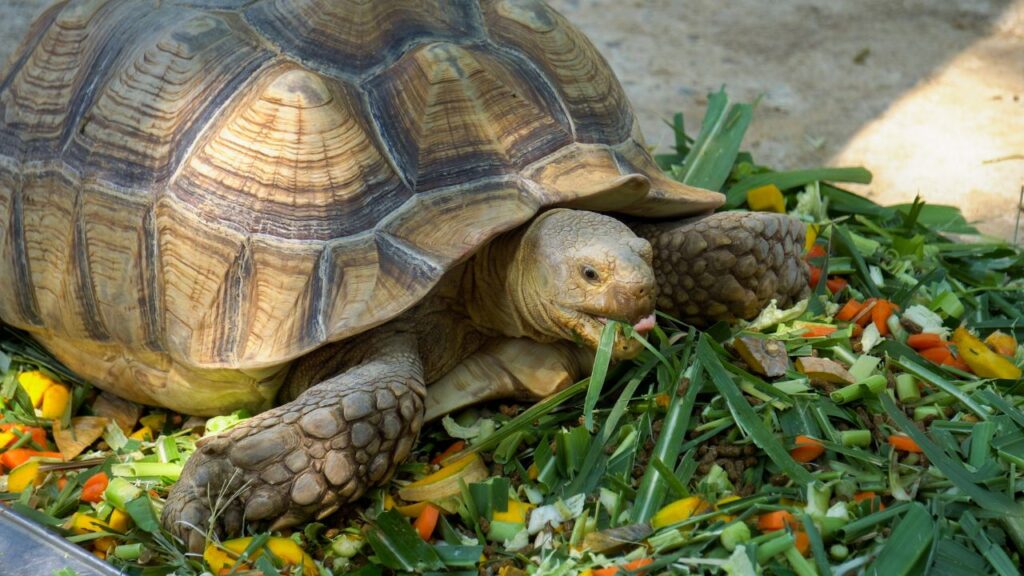The shoebill crane, with its prehistoric appearance and massive bill, is one of nature’s most intriguing creatures. Native to East African swamps, these birds captivate wildlife enthusiasts and casual observers alike. Despite their striking presence, most people don’t know much about them. I find them utterly fascinating. There’s just something about the piercing gaze that seems to see right inside you. And they just look so much like the missing evolutionary gap between dinosaur and bird.
1. A Bird of Many Names
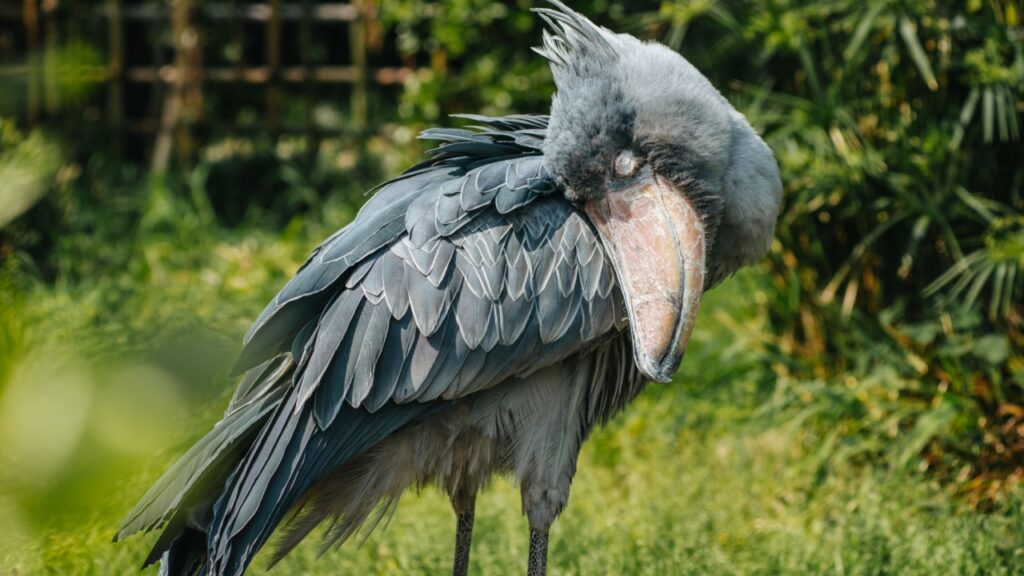
The shoebill crane goes by several monikers, each reflecting a different aspect of its unique appearance or behavior. While commonly known as the shoebill stork, it’s not actually related to storks. Some call it the whalehead or whale-headed stork due to its massive bill, while others refer to it as the boat-billed heron.
2. The Formidable Bill
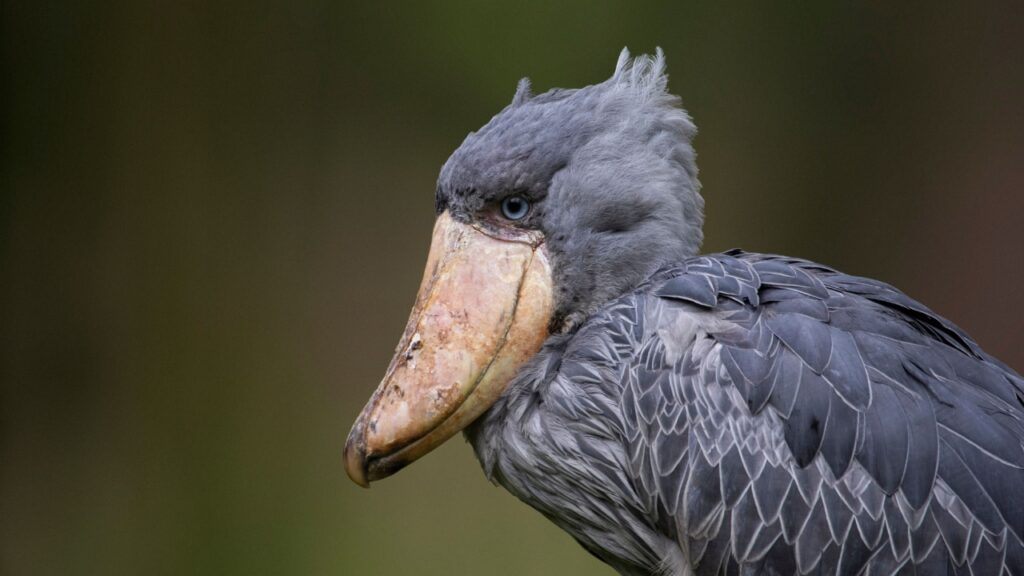
The shoebill’s most striking feature is its enormous bill, designed for efficient hunting. This powerful beak allows the bird to catch and crush prey, including large fish and even small crocodiles. Its sharp edges can decapitate prey with ease, making it an effective tool in their marshy habitat.
3. Masters of Stillness
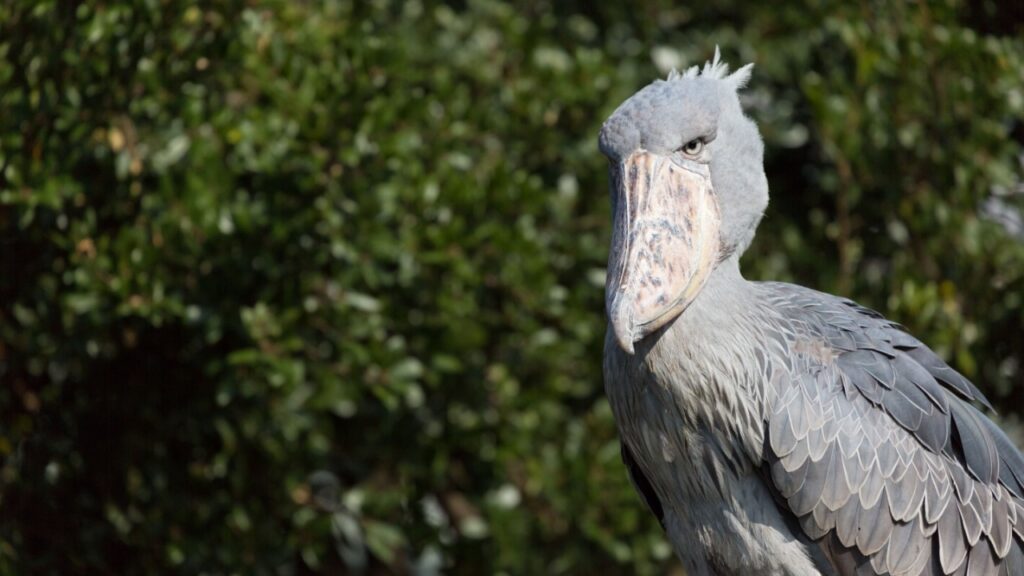
Shoebills possess an uncanny ability to remain motionless for extended periods, often staring intently at their surroundings. This behavior serves multiple purposes, from hunting to territorial defense. Their piercing gaze and statue-like stillness can be intimidating to both prey and potential threats.
4. Stealthy Predators
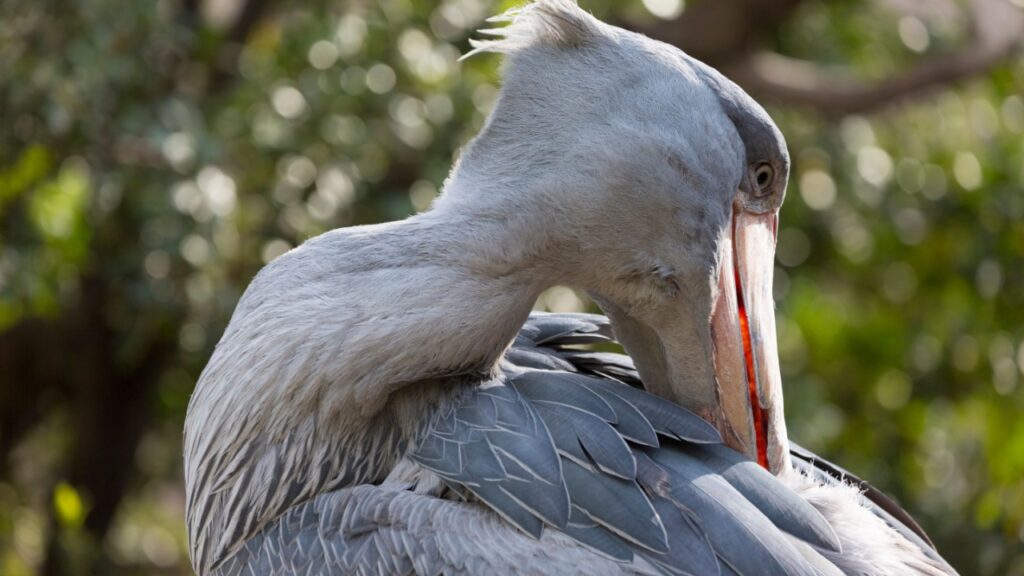
Despite their size, shoebills are surprisingly stealthy hunters. They employ a technique of standing motionless in shallow water, waiting for the perfect moment to strike. When prey comes within range, the shoebill launches a lightning-fast attack, using its massive bill to secure its meal.
5. Diverse Diet
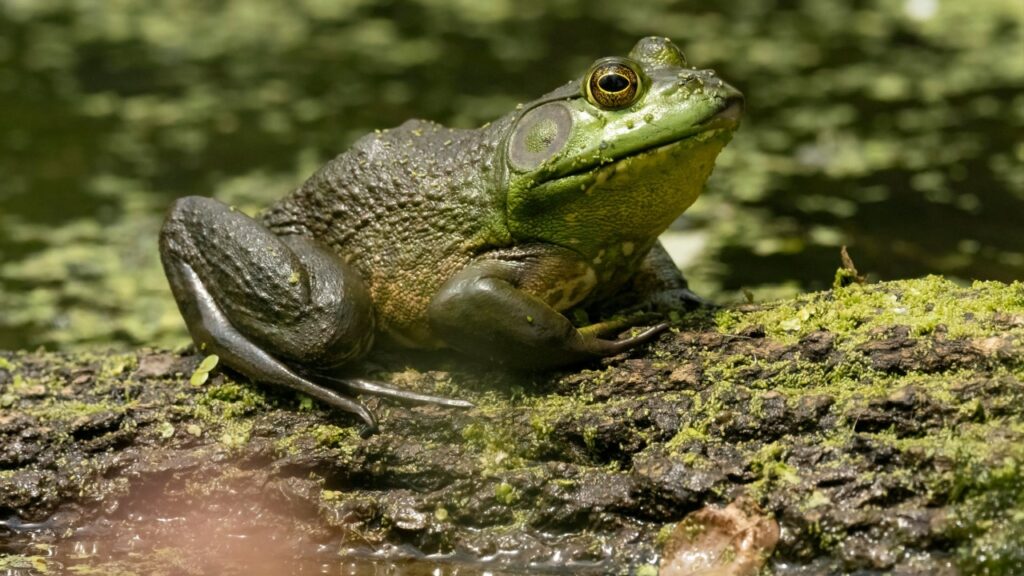
While primarily fish-eaters, shoebills have a varied diet that includes frogs, snakes, and even baby crocodiles. Their powerful bill allows them to consume prey that other birds might find challenging, showcasing their adaptability in unpredictable wetland environments.
6. Living Fossil
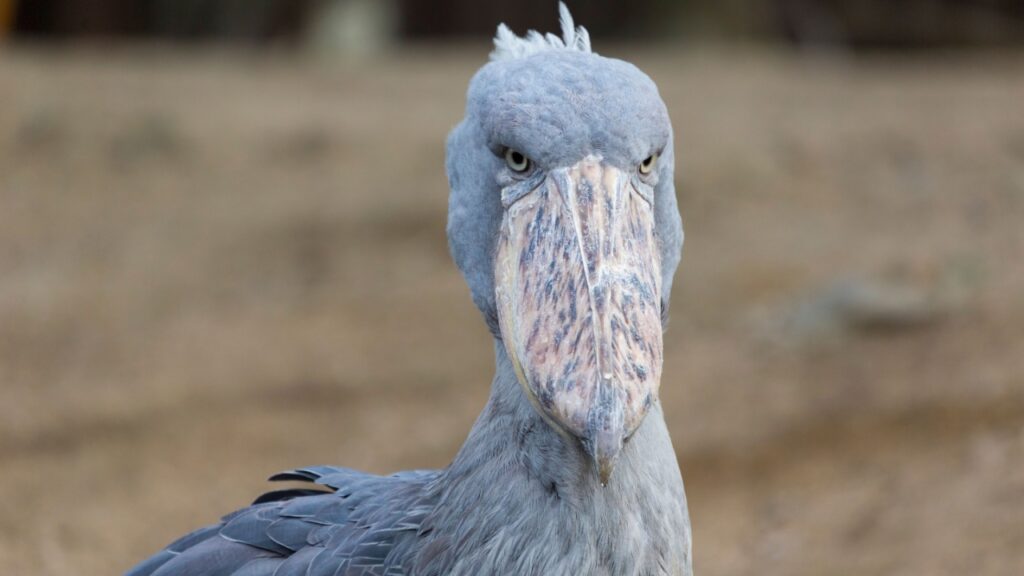
Often described as prehistoric or dinosaur-like, the shoebill is considered one of the most ancient bird species still in existence. Their large size, massive bill, and piercing eyes contribute to this primordial appearance, drawing comparisons to extinct terror birds.
7. Impressive Dimensions
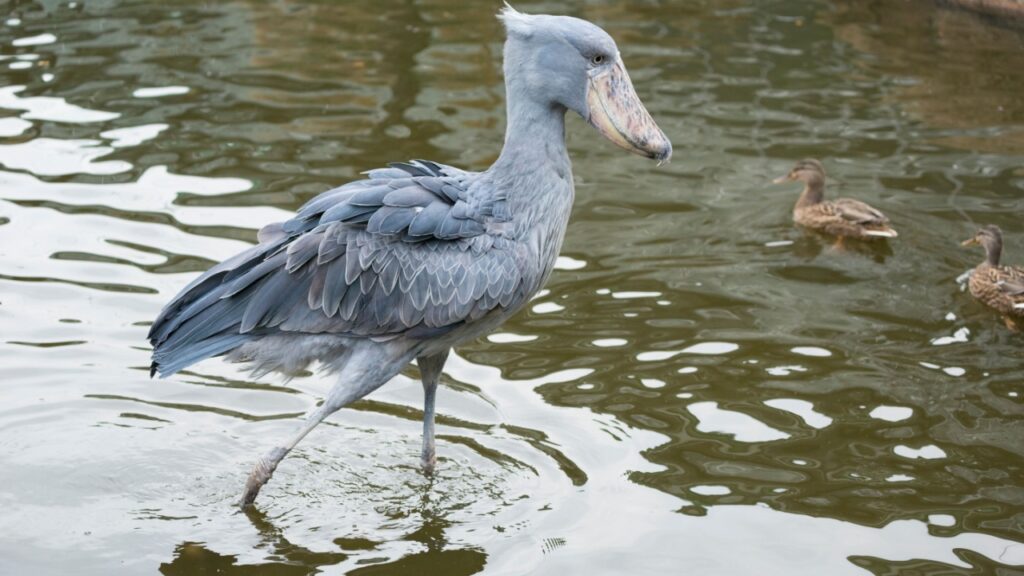
Shoebills can stand as tall as 4.5 feet and weigh up to 7 kilograms, with wingspans reaching 8 feet. Despite their size, they’re surprisingly agile in their wetland habitats, with long legs for wading and broad wings for effortless soaring.
8. Unique Flight Pattern
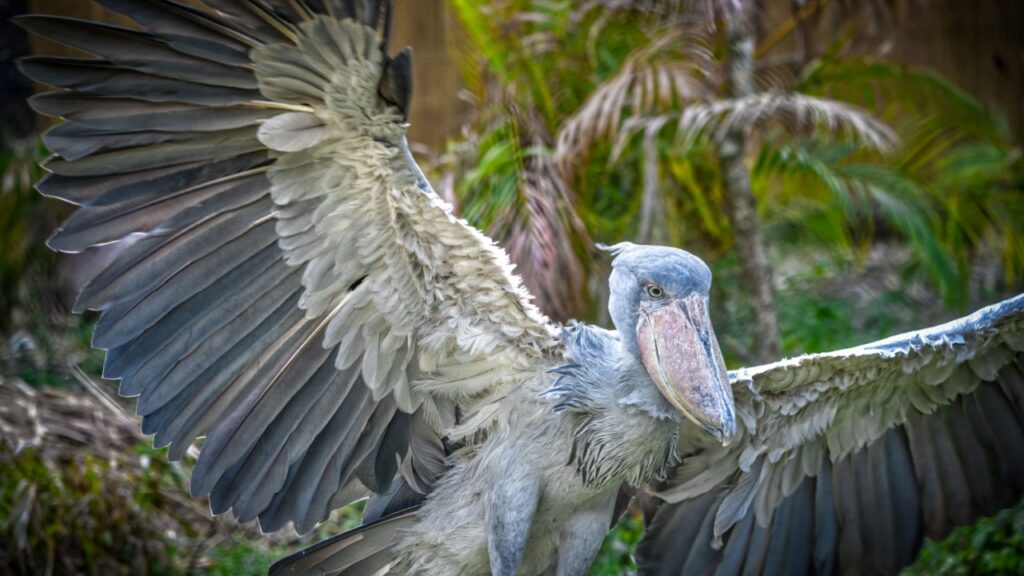
Shoebills have a distinctive flying style characterized by slow wing flaps, giving them a graceful, almost prehistoric appearance in flight. This energy-efficient method allows them to cover long distances when necessary, often using thermal currents to gain altitude.
9. Silent Communicators
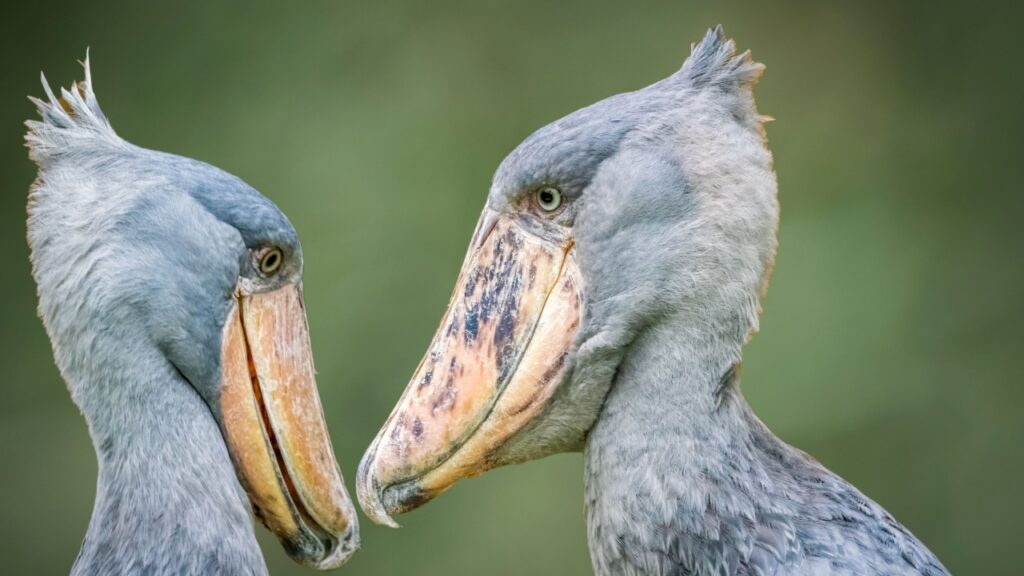
Unlike many vocal bird species, shoebills are remarkably quiet. Their primary form of communication is a unique bill-clap, used during mating rituals or to establish territory. This sound can be surprisingly loud, resembling machine-gun fire.
10. Solitary Lifestyle
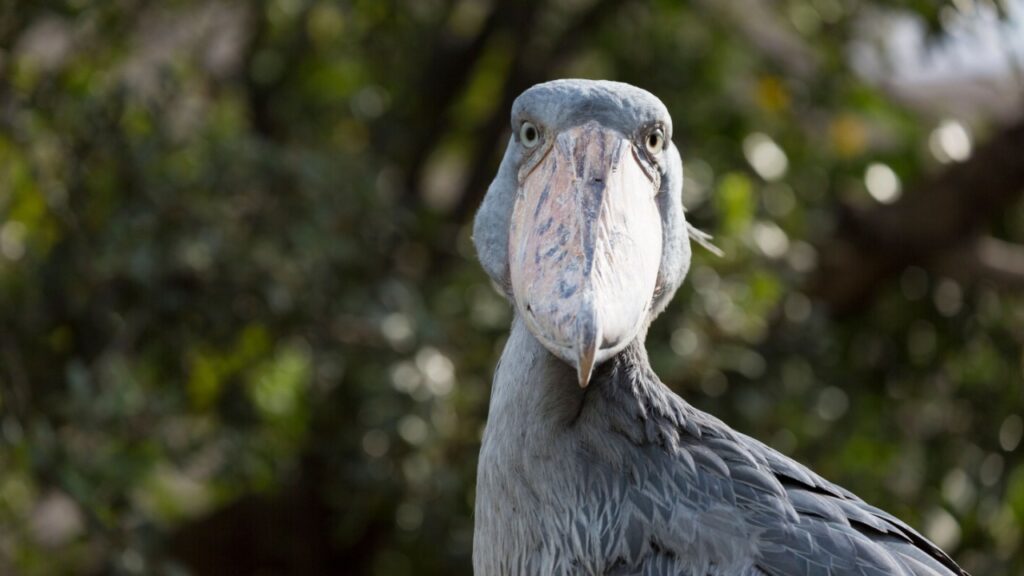
Shoebills prefer a solitary existence, only coming together during breeding season. They maintain large territories and are rarely seen in groups, making them challenging to study in the wild. This isolation is thought to be an adaptation to their resource-scattered wetland habitat.
11. Unusual Nesting Habits
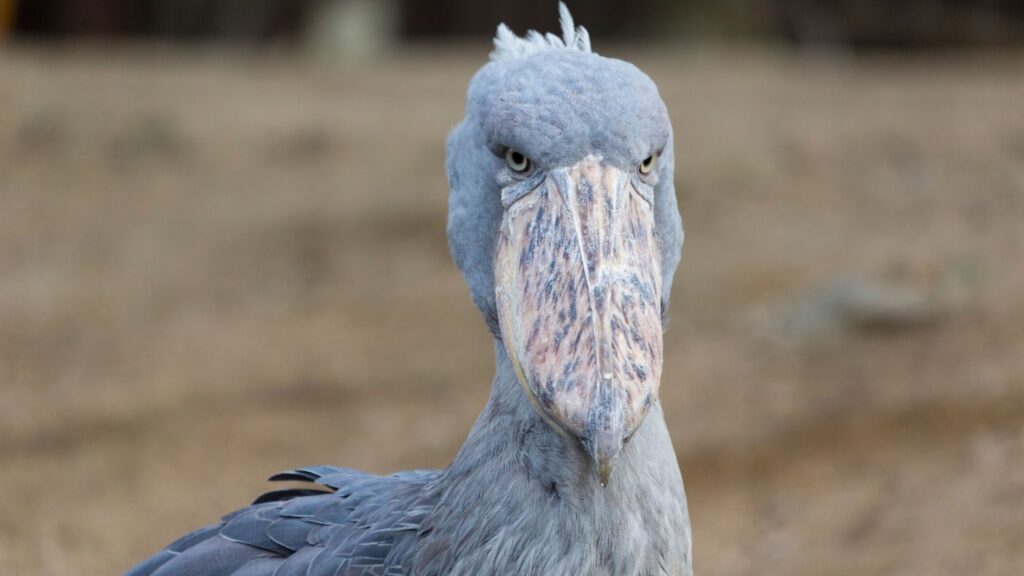
Shoebills build large nests on floating vegetation or solid ground near water. They typically lay only one or two eggs per clutch, with both parents sharing incubation and chick-rearing duties. Interestingly, if two chicks hatch, parents often focus on the stronger one, a strategy that ensures at least one chick has the best chance of survival.
12. Conservation Concerns
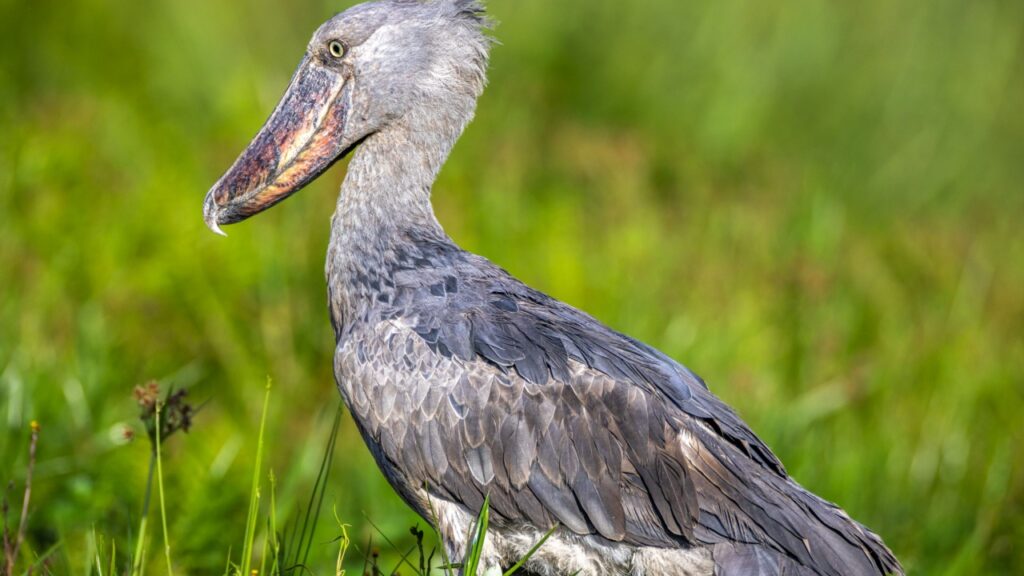
Despite their imposing presence, shoebills face significant threats in the wild. Habitat loss, hunting, illegal pet trade, and climate change all endanger their survival. Conservation efforts are ongoing, but more work is needed to protect these unique birds.
13. Ancient Lineage
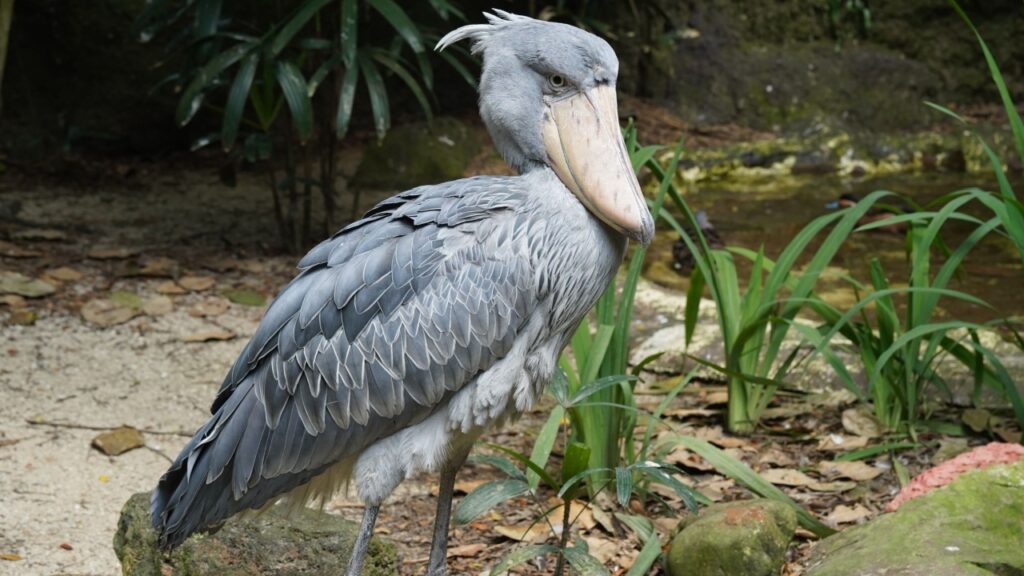
The shoebill’s lineage dates back millions of years, making it a living fossil. While sharing some characteristics with storks and herons, they’re actually more closely related to pelicans. Their unique features have evolved over time, perfectly adapting them to their swampy habitats.
14. Cultural Significance
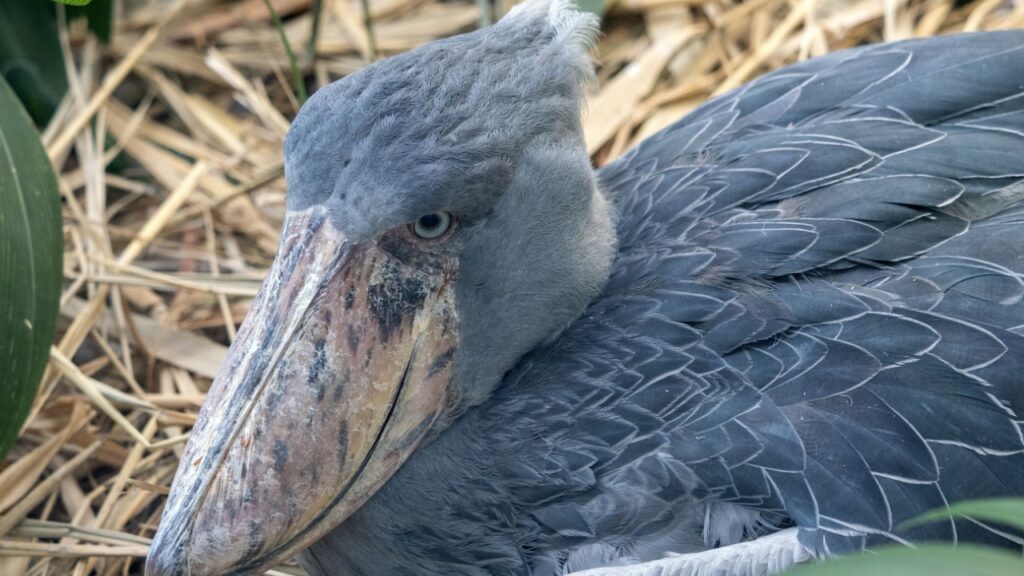
In some African cultures, shoebills hold special significance, sometimes viewed as omens or associated with local myths. In Uganda, the shoebill features on the country’s official seal. Their unique appearance has also made them popular in zoos and wildlife documentaries worldwide, raising awareness about their conservation needs.
15. Impressive Longevity
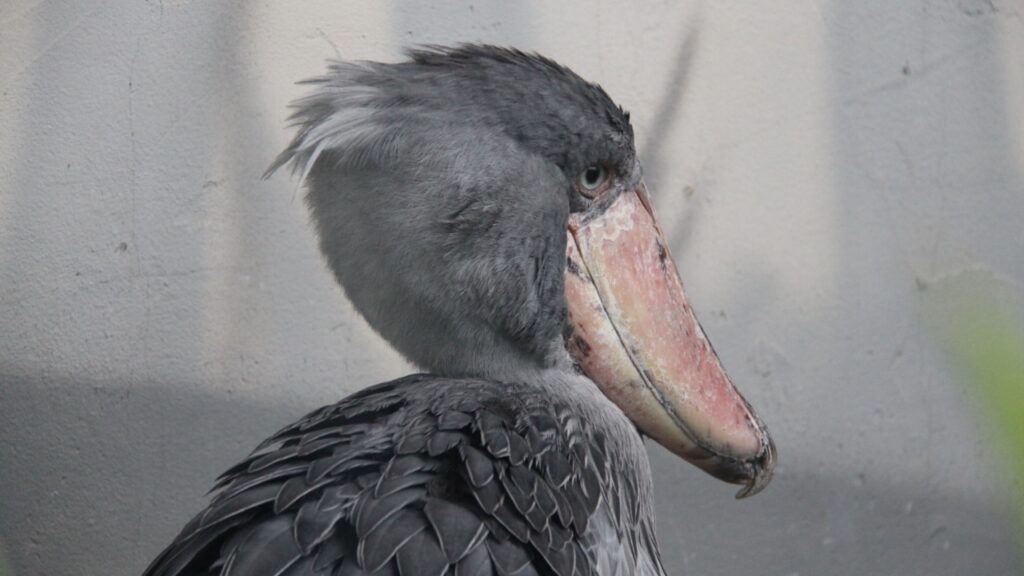
Shoebills can live up to 35 years in the wild, with even greater longevity in captivity. This unusual lifespan for a bird of their size contributes to their slow reproductive rate and impacts conservation strategies. Their longevity allows individual birds to become well-known to researchers and local communities over time.
Becky is a fervent wildlife enthusiast and pet care expert with a diploma in canine nutrition. Her love for animals stretches beyond the domestic, embracing the wild tapestry of global fauna. With over a decade of experience in animal welfare, Becky lends her expertise to OutlandishOwl through insightful articles, captivating wildlife information, and invaluable guidance on pet nutrition. Her work embodies a deep commitment to understanding the intricate lives of animals and a passion for educating others on sustaining natural habitats. Becky's hands-on conservation efforts and her knack for translating complex dietary science into practical pet feeding tips make her an indispensable voice for creatures great and small.

